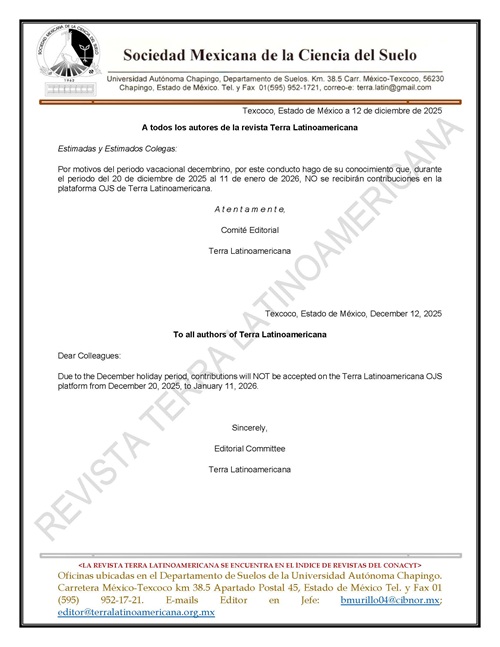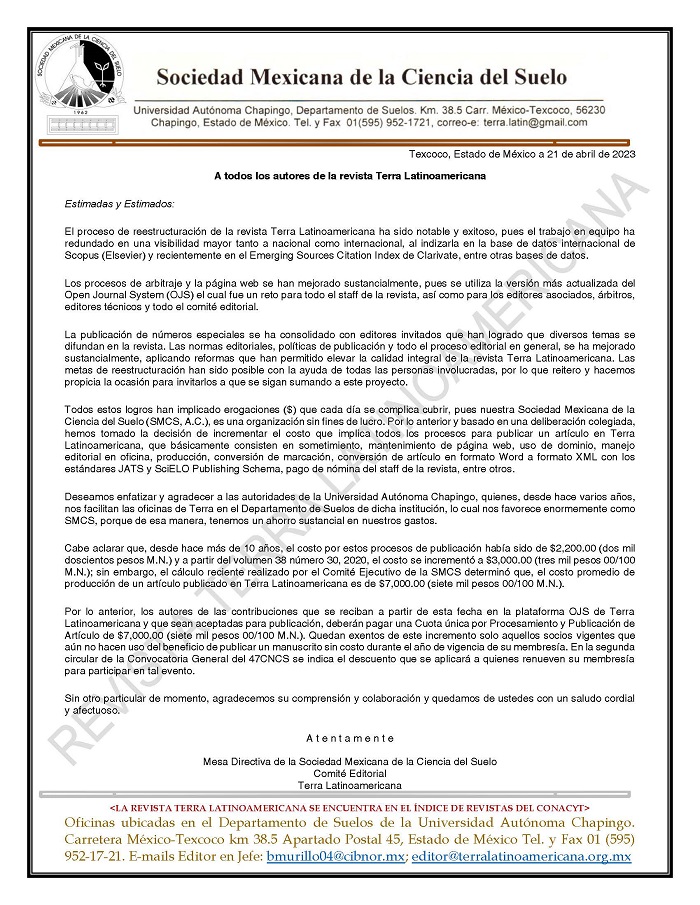Relationships between vascular plant and functional types richness: area-richness and species-functional types richness models
DOI:
https://doi.org/10.28940/terra.v41i0.1614Keywords:
statistical fits, n-order kinetic, second degree polynomial, logarithmic, power modelAbstract
The species richness-area relationship is considered one of the general laws in ecology. Through the richness of functional types, the scope of species richness is extended toward approaches to assess the functional redundancy of vegetation in vascular plants. The objective of the research was to develop and evaluate a model of the relationship richness-area and richness-species and functional types. For the richness-area relationship, many empirical models have been proposed in the literature, where the potential and the logarithmic stand out. These models, in addition to a second-order polynomial model, can be used to define the species (S) and functional types (Sg) richness relationship. The authors proposed model is based on the kinetics of order n, where the logarithmic and potential models are particular cases. To analyze the statistical adjustments of the considered models, a database of the related species richness and functional types richness was used in relation to the sampling area (A). The results of the application of non-linear regressions show that the kinetic model of order n has the best statistical adjustment, although the potential and logarithmic models are considered viable.
Downloads
Publication Facts
Reviewer profiles N/A
Author statements
- Academic society
- Terra Latinoamericana
- Publisher
- Mexican Society of Soil Science, C.A.

















